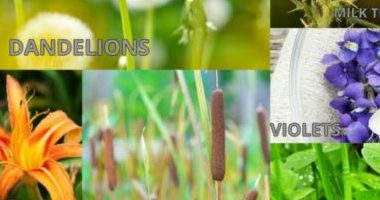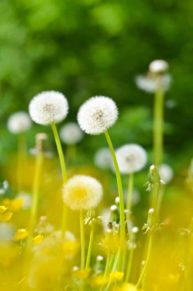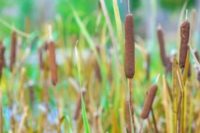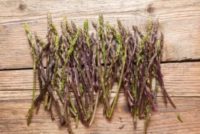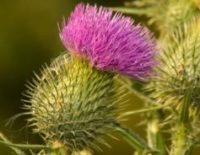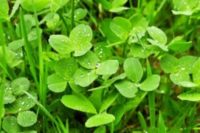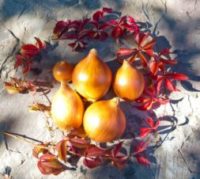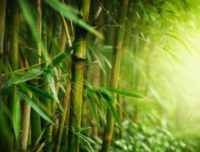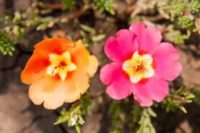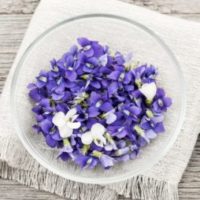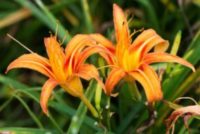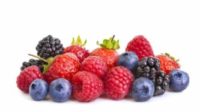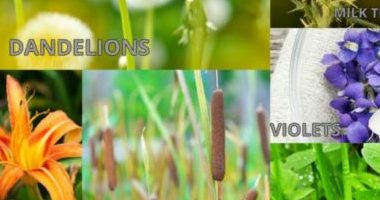
Heck, most of these might even make it into your kitchen on a regular basis.
But if fate hands you a raw deal, look for these best wild edible plants to help sustain.
As A Way To Introduce You To Skilled Survival, We’re Giving Away Our #78 Item Complete Prepper Checklist. Click Here To Get Your FREE Copy Of It.
The 11 Best Wild Edible Plants
1. Dandelions
We are all familiar with this common lawn weed, but few people realize that this plant can be eaten from top to bottom.
The yellow flower can be pulled from the plant and eaten raw.
Leafs and roots can also be eaten, but leaves taste their best when the plant is still young.
Older leaves can have more of a bitter taste. Leafs and roots taste better after being boiled.
My grandmother used to boil young dandelions and put them in the refrigerator to cool off.
After cooling, she’d add olive oil, vinegar, a little oregano, and some pepper. For a picky kid, they weren’t bad at all.
If I was in the middle of nowhere, I’d boil them, eat them, and thank God I found them.
2. Cattails
We tried cattails in Boy Scouts.
They were a staple for Native Americans.
Both the tips and the white-colored bottoms of the stalks are edible raw and palatable but be careful not to eat the fiber as it may cause a stomach ache.
They’re one of the best wild edible plants that provide an excellent source of starch.
Cattail pollen can also be mixed with flour and egg to make cattail pancakes.
The pollen is gathered only from the top of this plant in late June and early July. You’ll know you’ve hit the pollen when your hands turn yellow.
3. Wild Asparagus
Asparagus is one of the best wild edible plants widely found across North America.
If you find it in your life, you’ll probably find it in or around the same location for the rest of your life.
This wild edible is hardy.
Look for old dead stalks about three feet high. Near those, new young stalks can be found. Wild asparagus doesn’t like soil that’s too moist.
It can usually be found along ditch banks or next to railroad tracks.
When we were kids, we picked it along the tracks when we were pheasant hunting.
At least we came home with something!
If you live in a place where summers are dry, you can usually find wild asparagus.
Wild asparagus stalks are usually thinner than those you see at the supermarket. If you cut a stalk as close to the ground as possible, a new stalk will grow back.
In the wilderness, wild asparagus can be eaten raw, boiled, or steamed.
4. Milk Thistle
Another wild edible found across North America is milk thistle.
This is the plant with the purple flower-like top that we see along some highways.
The spines can be removed from the leaves and the leaves eaten with other greens. Stalks can be boiled.
The plant’s roots can be boiled or even baked.
5. Clover
Everybody knows clover and it falls within the group of edible plants.
Clover is everywhere in the United States and very high in protein.
Raw clover can cause problems with digestion, but it can be made into a juice form.
Flour can also be made from dried clover flowers and seed pods.
Tea can also be made from clover, just steep it in water.
Everybody needs a little luck to get out of a survival situation, so try not to eat the four-leaf ones.
6. Wild Onions
If it looks like an onion and smells like an onion, go ahead and eat it. If it looks like an onion but doesn’t smell like one, don’t eat it.
It could be dangerous.
The same rule applies to garlic.
Wild onions like to grow in damp places, especially on the forest floor.
All of the wild onion plants can be eaten, from top to bottom. It can be eaten raw, cooked, or with other greens.
7. Bamboo
Classified as grass, bamboo is one of the edible weeds found in certain parts of the United States.
The fiber content in bamboo is very high.
Shoots should be cut when very young and under a foot tall.
Bamboo cannot be eaten raw. Outer leaves should be peeled off. Remove any tough parts of the shoots.
Cut them into 1/8″ slices and boil them uncovered for at least 20 minutes or longer to rid them of bitterness.
They can then be eaten alone or with other greens. Bamboo shoots are high in fiber, protein, and potassium.
If caught in a survival situation, dried bamboo also makes excellent kindling for a fire.
As A Way To Introduce You To Skilled Survival, We’re Giving Away Our Ultimate Survival Gear Checklist. Click Here To Get Your FREE Copy Of It.
8. Purslane
This is a common weed we’ve seen before but no one can pronounce the name.
It grows close to the ground, likes shady areas, and looks like a miniature jade plant.
We’d see it growing in sidewalk cracks going to and from school.
It’s one of the most nutritional edible weeds with high Omega-3 fatty acids and beta-carotene.
Purslane can be eaten raw or cooked or mixed with greens.
It’s making its way onto restaurant menus so it’s good enough for a restaurant, it’s good enough for somebody in the middle of nowhere with few nutritional choices.
Wherever you find purslane, it will be around for a long time. Its seeds are viable in the soil for well over 30 years.
Like asparagus, once it’s there, it will always be there.
9. Violets
Violets are edible flowers and they are high in vitamins A and C.
Their leaves can be eaten raw or boiled, or they can be dried to make tea.
The flowers can be eaten raw. Be sure not to eat the roots or stems and avoid African Violets.
Violets have also been used medicinally. A common headache cure is a warm towel soaked with violet tea and placed on the back of the neck.
10. Day-lily
The daylilies have a long history in China as both edible flowers and medicine.
Young, daylily leaves can be cut at 5 inches and sautéed or stir-fried.
Don’t damage the flower stalks when cutting the leaves because the daylily can be cut again when the buds and blossoms are present.
The buds can be eaten raw, boiled, or stir-fried. Partially opened or fully opened daylily flowers can be battered with a mixture of flour and water and fried.
The roots of the daylily are also edible, either raw or boiled. They pack high nutrition in the late fall after storing vitamins and minerals from the summer season.
11. Berries
My favorite best wild edible plants are berries and they grow everywhere in northern North America.
Wild blueberries and blackberries grow in cool and high climates.
Almost all berries with dark color can be safely eaten in the wilderness.
Both blueberries and blackberries are loaded with Vitamin C and rich in fiber.
White, yellow, and red berries can kill. Stay away from them unless you are certain, especially in a survival situation.
Although grapes are not necessarily berries, I don’t know of a single type of grape that can’t be eaten.
If the birds have eaten all of the grapes, pick the smaller grape leaves and dry them for a couple of days and then boil them for about 20 minutes uncovered.
Any meat you might have can be wrapped in the leaves. If there’s no meat, just eat the grape leaves by themselves.
I’ve eaten at least 10,000 of them and never got sick. Although relatively low in caloric value, they’re rich in vitamins and fiber. I’d even eat them raw after washing them if I had to.
12. Acorns

This flour can then be used to bake with just like wheat flour.
Now it does have a unique taste and the properties will make baking with it a bit different.
But as a last resort food source or as a way to use what nature provides, it’s definitely a wild edible you should try.
13. Wild Lettuce
I wanted to highlight one more wild plant that you should forage.
It’s not edible but for medicinal purposes, it’s a great find.
Wild lettuce can be harvested and processed to make wild lettuce extract.
This extract has many medical benefits so it’s worth finding, foraging and harvesting if you happen to come across any of it!
As A Way To Introduce You To Skilled Survival, We’re Giving Away Our Ultimate Survival Gear Checklist. Click Here To Get Your FREE Copy Of It.
You Can Never Be Too Careful
Always be sure of what you’re going to eat. Some plants might look like one of these best wild edible plants but instead, they can sicken or kill you.
One suggestion is to eat only a small portion of a plant and then wait an hour to see how your body reacts to it. There are other more determinative tests that can be done on wild edibles that one should learn.
Beware of plants located closer to civilization or roadways as they may have been sprayed with dangerous chemicals.
If a plant smells like almonds, never eat it.
That’s the smell of cyanide.
Remember: Prepare, Adapt and Overcome,
“Just In Case” Jack
P.s. Are you ready for the tough times ahead?
Find out now by taking my short Readiness Score Quiz – it’s absolutely free.
Once complete, you’ll know exactly where you stand on the “fragile” vs.” resilient” spectrum.
So click here to start the Quiz….And don’t worry; the questions are so easy a 3rd grader could answer them.
Click on the image to begin the Quiz and find out once and for all if you’re part of “The Fragile Masses” or “The Resilient Few.”
The post 12 Best Wild Edibles You Can Forgage In The Wild appeared first on Skilled Survival.


